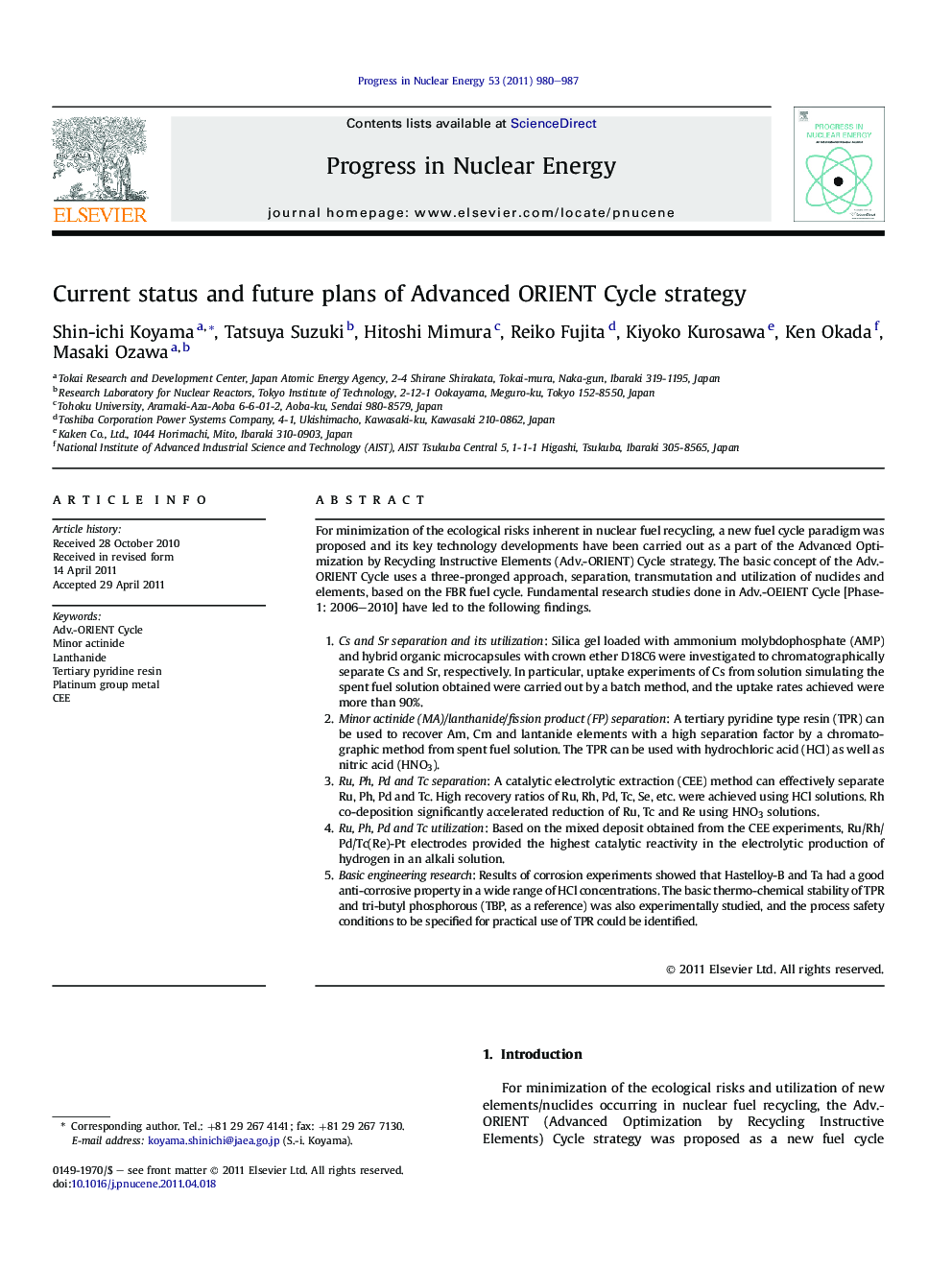| کد مقاله | کد نشریه | سال انتشار | مقاله انگلیسی | نسخه تمام متن |
|---|---|---|---|---|
| 1741240 | 1017380 | 2011 | 8 صفحه PDF | دانلود رایگان |

For minimization of the ecological risks inherent in nuclear fuel recycling, a new fuel cycle paradigm was proposed and its key technology developments have been carried out as a part of the Advanced Optimization by Recycling Instructive Elements (Adv.-ORIENT) Cycle strategy. The basic concept of the Adv.-ORIENT Cycle uses a three-pronged approach, separation, transmutation and utilization of nuclides and elements, based on the FBR fuel cycle. Fundamental research studies done in Adv.-OEIENT Cycle [Phase-1: 2006–2010] have led to the following findings.1.Cs and Sr separation and its utilization: Silica gel loaded with ammonium molybdophosphate (AMP) and hybrid organic microcapsules with crown ether D18C6 were investigated to chromatographically separate Cs and Sr, respectively. In particular, uptake experiments of Cs from solution simulating the spent fuel solution obtained were carried out by a batch method, and the uptake rates achieved were more than 90%.2.Minor actinide (MA)/lanthanide/fission product (FP) separation: A tertiary pyridine type resin (TPR) can be used to recover Am, Cm and lantanide elements with a high separation factor by a chromatographic method from spent fuel solution. The TPR can be used with hydrochloric acid (HCl) as well as nitric acid (HNO3).3.Ru, Ph, Pd and Tc separation: A catalytic electrolytic extraction (CEE) method can effectively separate Ru, Ph, Pd and Tc. High recovery ratios of Ru, Rh, Pd, Tc, Se, etc. were achieved using HCl solutions. Rh co-deposition significantly accelerated reduction of Ru, Tc and Re using HNO3 solutions.4.Ru, Ph, Pd and Tc utilization: Based on the mixed deposit obtained from the CEE experiments, Ru/Rh/Pd/Tc(Re)-Pt electrodes provided the highest catalytic reactivity in the electrolytic production of hydrogen in an alkali solution.5.Basic engineering research: Results of corrosion experiments showed that Hastelloy-B and Ta had a good anti-corrosive property in a wide range of HCl concentrations. The basic thermo-chemical stability of TPR and tri-butyl phosphorous (TBP, as a reference) was also experimentally studied, and the process safety conditions to be specified for practical use of TPR could be identified.
Journal: Progress in Nuclear Energy - Volume 53, Issue 7, September 2011, Pages 980–987